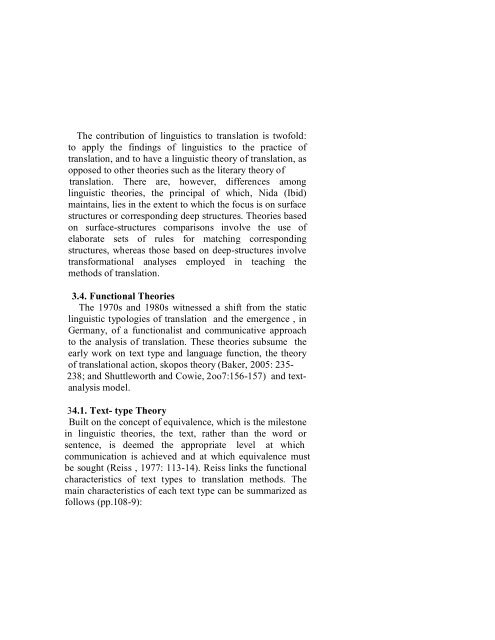424_2061_A.B.
424_2061_A.B.
424_2061_A.B.
- No tags were found...
Create successful ePaper yourself
Turn your PDF publications into a flip-book with our unique Google optimized e-Paper software.
The contribution of linguistics to translation is twofold:to apply the findings of linguistics to the practice oftranslation, and to have a linguistic theory of translation, asopposed to other theories such as the literary theory oftranslation. There are, however, differences amonglinguistic theories, the principal of which, Nida (Ibid)maintains, lies in the extent to which the focus is on surfacestructures or corresponding deep structures. Theories basedon surface-structures comparisons involve the use ofelaborate sets of rules for matching correspondingstructures, whereas those based on deep-structures involvetransformational analyses employed in teaching themethods of translation.3.4. Functional TheoriesThe 1970s and 1980s witnessed a shift from the staticlinguistic typologies of translation and the emergence , inGermany, of a functionalist and communicative approachto the analysis of translation. These theories subsume theearly work on text type and language function, the theoryof translational action, skopos theory (Baker, 2005: 235-238; and Shuttleworth and Cowie, 2oo7:156-157) and textanalysismodel.34.1. Text- type TheoryBuilt on the concept of equivalence, which is the milestonein linguistic theories, the text, rather than the word orsentence, is deemed the appropriate level at whichcommunication is achieved and at which equivalence mustbe sought (Reiss , 1977: 113-14). Reiss links the functionalcharacteristics of text types to translation methods. Themain characteristics of each text type can be summarized asfollows (pp.108-9):34
















